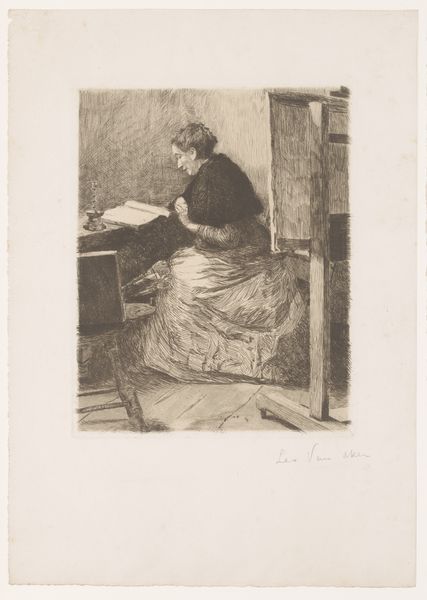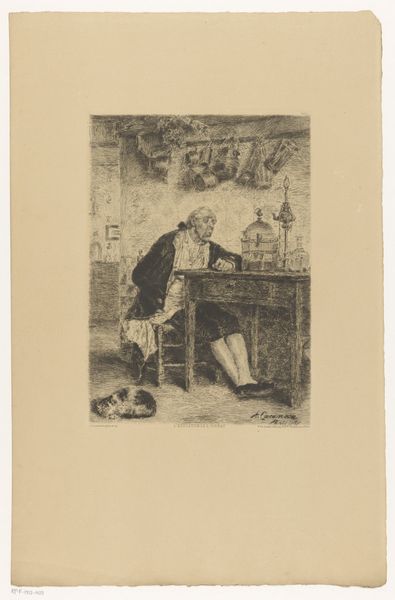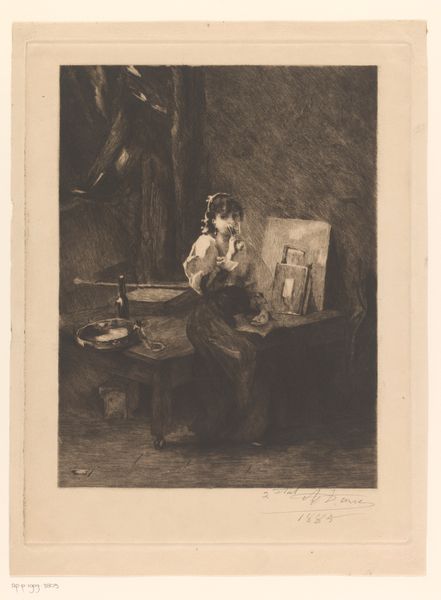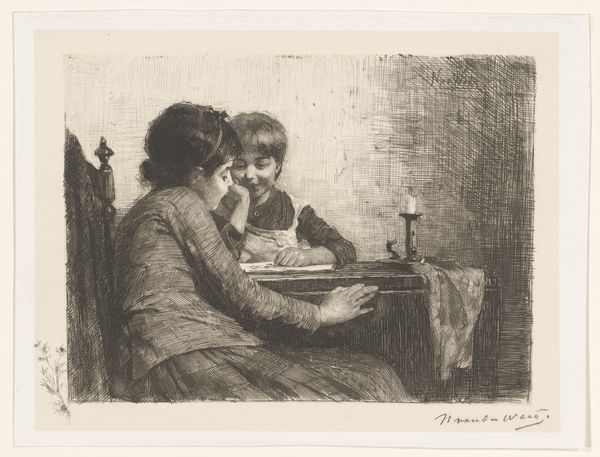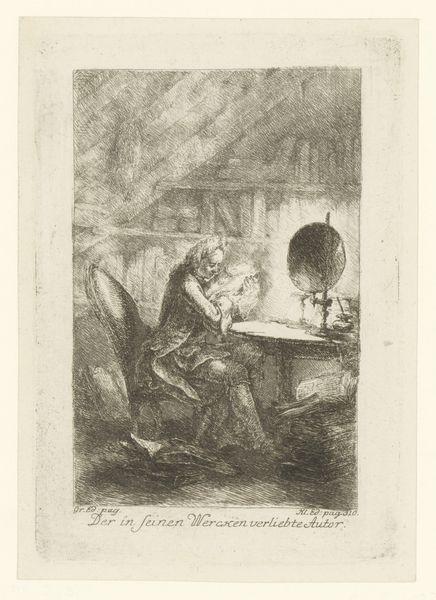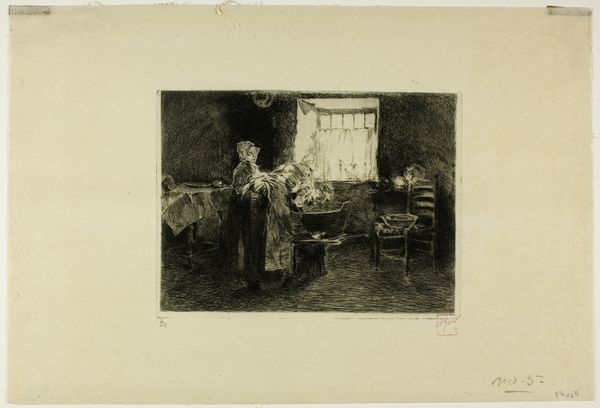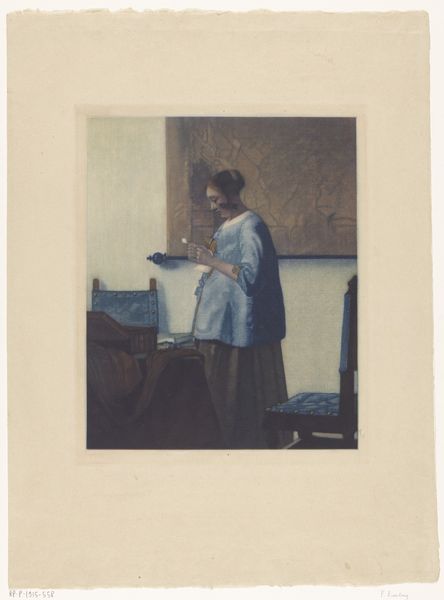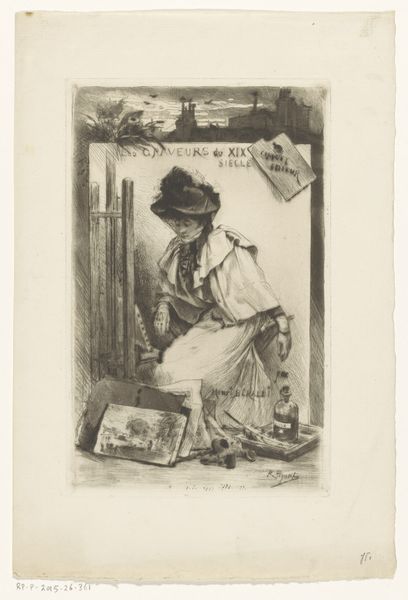
Uitnodiging voor een tentoonstelling van moderne grafiek bij de boek- en kunsthandel van Edmond Sagot before 1904
0:00
0:00
drawing, graphic-art, lithograph, print, paper, poster
#
portrait
#
drawing
#
graphic-art
#
art-nouveau
#
lithograph
# print
#
paper
#
cityscape
#
poster
Dimensions: height 207 mm, width 149 mm
Copyright: Rijks Museum: Open Domain
Editor: So, here we have "Invitation to an exhibition of modern prints at the book and art dealer Edmond Sagot" by Manuel Robbe, from before 1904. It's a lithograph, and the composition, with this woman viewing the art, has a contemplative mood. How do you interpret this work? Curator: Well, looking at this lithograph, I'm struck by the intersection of gender, commerce, and art at the turn of the century. Here, a woman is positioned as the ideal consumer of "modern prints." How does that connect with our understanding of women's roles and accessibility to education in that time period? Editor: Interesting. I hadn't considered the commercial aspect so much. I was mostly drawn to the intimate, almost voyeuristic feel. Curator: Exactly. It’s presented as an exclusive invitation. Note also the text and the location in Paris, suggesting a very specific, upper-middle-class audience. The "modern prints" themselves would have been pushing against academic traditions, aligning with the emerging feminist movement’s questioning of established norms. How might the purchase of such "modern prints" have been seen as an act of cultural or even political rebellion? Editor: That's a good point! Maybe this print subtly empowers women, depicting them engaging with and supporting modern art, perhaps influencing social change? Curator: Precisely. By understanding these cultural codes, we can understand this invite not just as advertisement, but as a statement. This poster acts as both art object and socio-political mirror, reflecting its own historical moment. Editor: I never considered an invitation as more than a document! This conversation really highlighted the interconnectedness between social movements, art, and commerce. Curator: Indeed! Viewing art through an intersectional lens, thinking about the historical context, illuminates so much more than aesthetics alone.
Comments
No comments
Be the first to comment and join the conversation on the ultimate creative platform.
